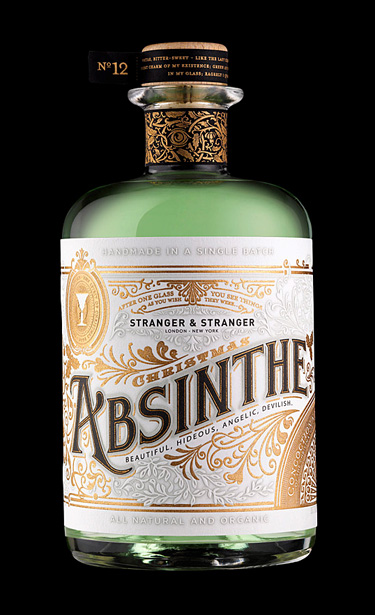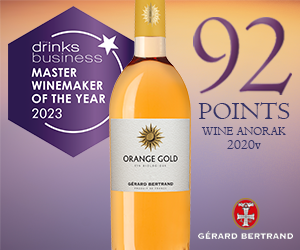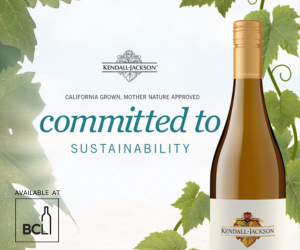So many things we might take for granted when we choose a drink to begin the evening, came from the apothecarial exigencies of the ecclesiastical orders in France, as in other parts of Europe.

Herbs, roots, flowers, moss, almost any kind of vegetation imaginable, wee combined with distilled spirits to cure all manner of ailments. At some point, it became abundantly clear that at least some of these concoctions were good for one's health simply because they tasted so good, adding to a sense of well-being and augmenting the process of preparing and consuming a good dinner.
There was a cocktail craze sweeping the world in the 1950s, partly post-war euphoria, partly emulation of entertainers like Frank Sinatra, Gibert Becaud and Charles Aznavour. That led to the introduction of key brands of aperitifs into mixology, a practice that ebbed, but never dissipated. When absinthe was officially banned from production in France, in 1915, it opened the way for other brands to become the mainstays of pre-dinner prandials. Today, the cocktail craze is with us again. Dimitri Lezinska, Brand ambassador for Grey goose vodka, says "cocktails have never been more popular than they are today. There are no limits to the creativity mixologists display in making new drinks." this explains why, no matter where in France you go, you will find, along with the traditional aperos, plenty of innovations. But what are the "traditionals"?
From the Massif to the Jura, regional drinks are the mainstay. Some are more famous than others. Lillet, invented in Bordeaux in the mid-1880's, was, and is, a combination of local red wine and a specific set of tropical and citrus fruits, all steeped in alcohol and then aged in barrel. It has maintained its allure through the decades. It is most often taken on the rocks, though, like all other brands, it is the basis of a host of cocktails concoctions. There is a Lillet Blanc as well. In the Languedoc-Roussillon, Byrrh was initially marketed as a health drink, a mixture of red wine and quinine (which later became, simply, tonic water). To ease the ire of other local aperitif producers, and it had an excellent run, until early in the 20th century. It is still produced today in Perpignan, in a factory designed by Gustav Eiffel.
Pineau des Charentes, a blend of white wine and Cognac, is another treat best served by itself, on the rocks. There are many versions of the drink, with varying degrees of quality, but it can reach rather sublime heights in the hands of a producer such as Fussigny. Pineau is not exactly all the rage these days, but will, no doubt mount yet another comeback into popular taste. Still, it is well worth consideration while sitting at a little bar in the cognac region, sipping it while you decide which restaurant at which to dine that evening.
Canon Felix Kir was so well respected that not only was he named Mayor of Dijon in 1945, a post he held until his death in 1968, but a lovely drink made of crème de cassis and white wine, which he popularized, bears his name to this day and beyond. In Dijon, it did not take long for the aperitif, or apero, called a kir, to be born. It was a mix of the local white wine, aligoté and the liqueur. A Kir royale, still poured on virtually every occasion in Burgundy, features the liqueur and champagne. Virtually every region in France will have its own variant on this, depending on what the local white wine is. And yes, even in Bordeaux, you can find a nice red and the crème de cassis.
In Normandy, apples and to a lesser extent pears, form the main focus, most famously with Calvados, which is an inspired choice for both pre and pot-dinner consumption. The apple in Normandy underlines the general rule of thumb, which is that the local bounty dictates the local drinking habits, obviously with wine, but with everything else as well. In Provence, you can still find RinQuinQuin a la peche, a peach-based drink that, like pineau, is not at the top of the charts these days, but is still a lovely thing to sip and contemplate on as you look out over all those flowers. You can think about the fact that the peaches and peach tree leaves in the drink you hold in your hand came originally from Persia, were brought into what we know now as France by the Romans, and the rest was left to local alchemy, as with so many of the fabulous products we have to choose from when deciding on an apero.
Absinthe may have been banished, and given its extremely high alcohol content and purportedly mild hallucinogenic qualities, we are not on record as saying that was a bad thing at the time, there remains an alternative, the ever-famous pastis. Anise-based, and coming in many guises, most famously by Pernod, in which it is mixed with select herbs, or in Ricard, a somewhat less herbal, more anise-driven. These drinks are best taken with an equal portion of cool water, served on the side and administered by oneself, to measure. The liquid turns a milky white, and the bouquet lifts and rises, creating, on the whole, a truly memorable experience.
There is, finally, no way to go wrong ordering an apero in France: choose something distinctively local, with some kind of history to it, and enjoy the moment.
First appeared in Maison de France (2009)

 quicksearch
quicksearch




